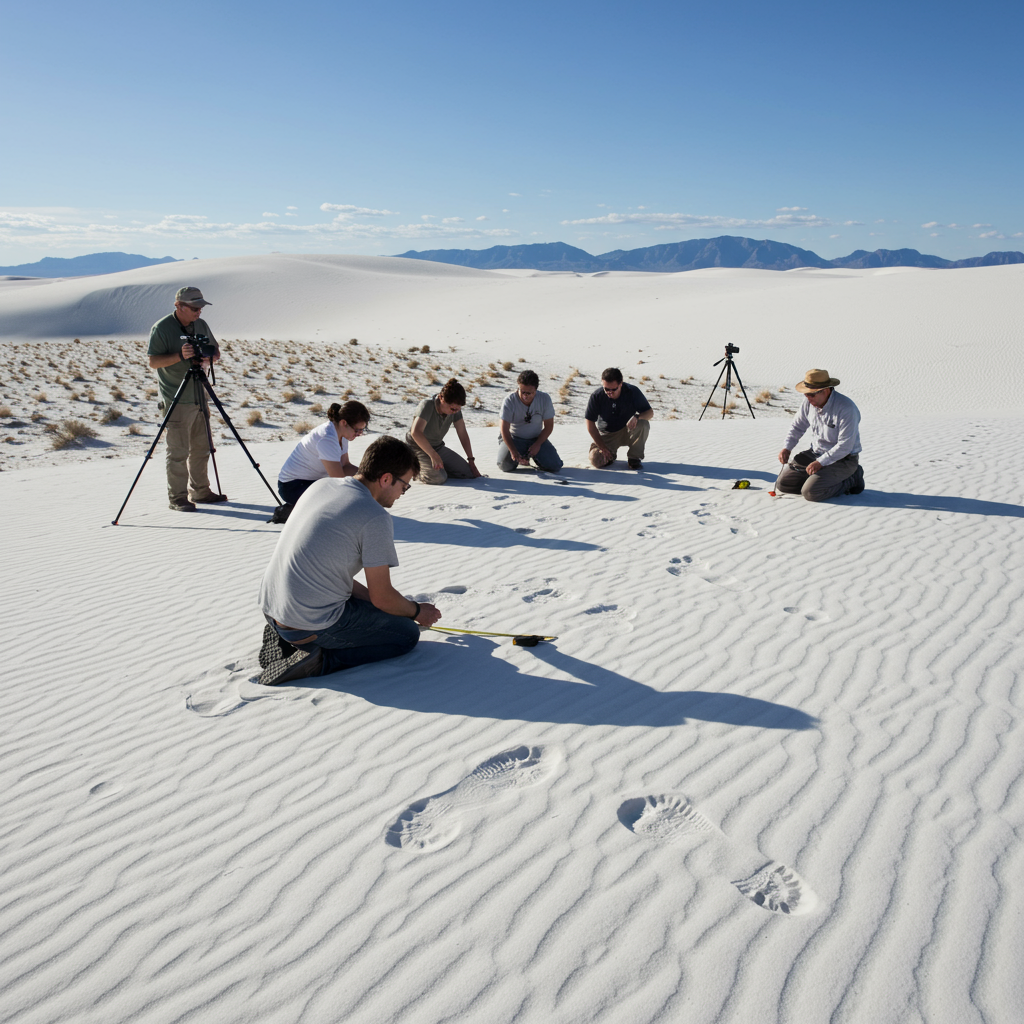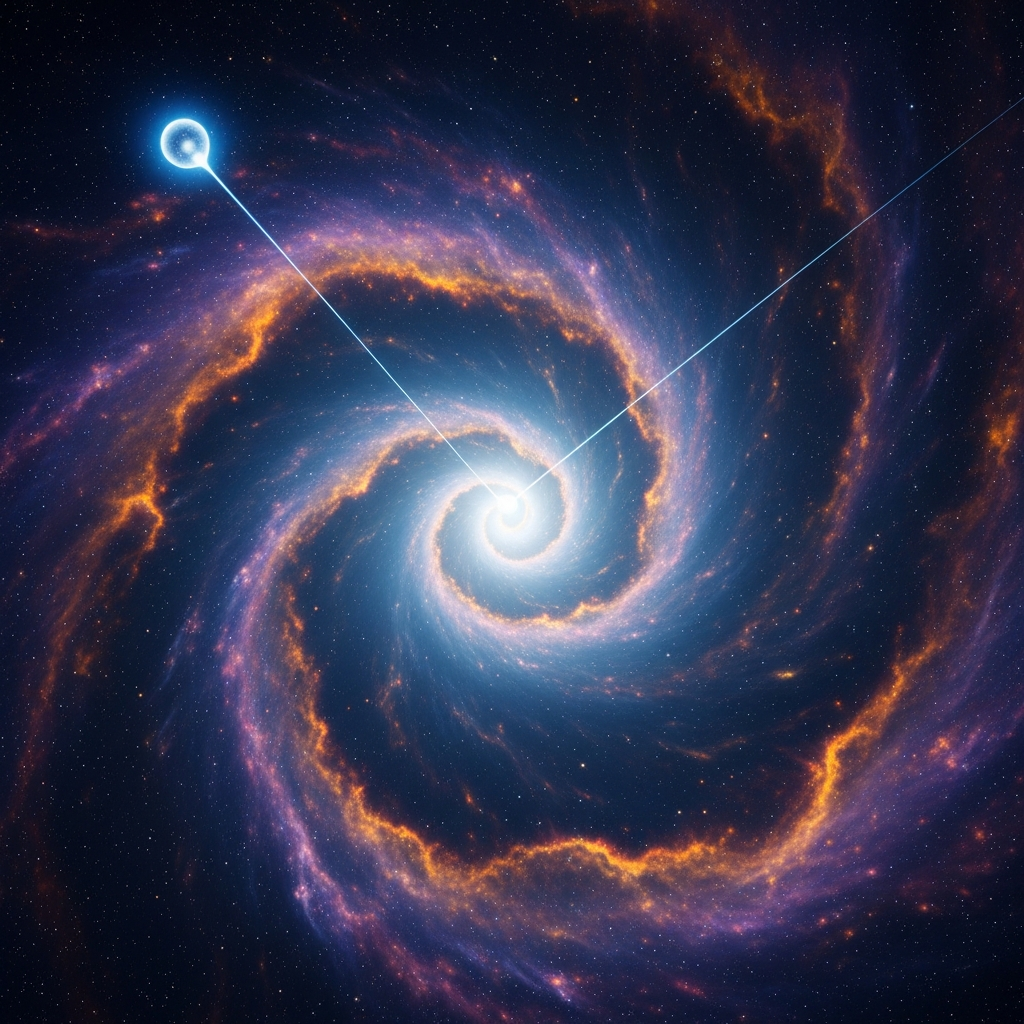Ancient Footprints Rewrite the Story of First Americans
For decades, the prevailing theory held that the first humans arrived in North America relatively late, roughly 13,000 to 16,000 years ago, aligning with the emergence of the Clovis culture. But a groundbreaking discovery in New Mexico challenged this long-accepted timeline, sparking a heated debate among scientists. Fossilized human footprints found at White Sands National Park suggested humans were present thousands of years earlier – during the peak of the last Ice Age. Now, robust new research provides definitive confirmation for this controversial early date, significantly revising our understanding of how and when the Americas were first settled.
The White Sands Discovery and the Initial Controversy
The journey to overturn the conventional timeline began in 2009 with the discovery of numerous footprints – human and animal – preserved in ancient lakebed sediments at White Sands National Park. By 2019, archaeologists led by Matthew Bennett had excavated over 60 human tracks alongside prints of extinct megafauna like dire wolves and big cats, capturing a snapshot of an ancient ecosystem. These tracks were layered within distinct sediment deposits left by the shifting shoreline of a vast ancient lake, Lake Otero.
In 2021, initial radiocarbon dating of seeds from an aquatic plant (Ruppia cirrhosa) found directly within these layers yielded astonishing results: the footprints dated to between 21,000 and 23,000 years ago. This placed humans in what is now New Mexico during the Last Glacial Maximum (LGM), a period when massive ice sheets covered much of North America, presumably blocking passage south for anyone arriving from Siberia via the Bering land bridge. The dates hinted that people must have arrived much earlier, potentially via a coastal route, and were already south of the ice barrier by the LGM.
However, these initial findings faced considerable skepticism. Critics argued that aquatic plants can absorb ancient carbon dissolved in groundwater, potentially making radiocarbon dates appear older than their true age. Concerns were also raised that pollen samples used for dating weren’t always from the precise sediment layers as the footprints.
Building a Case: Multiple Dating Methods Confirm the Age
In response to this scientific scrutiny, the research team embarked on further studies using independent dating methods to verify the controversial age.
Terrestrial Pollen Dating (2023): Researchers meticulously isolated terrestrial plant pollen (from pine, spruce, and fir trees) directly from the same footprint layers. Unlike aquatic plants, terrestrial pollen draws carbon from the atmosphere, avoiding the groundwater carbon issue. Radiocarbon dating of these samples produced dates statistically identical to the earlier seed dates, falling within the 21,000 to 23,000-year range. This painstaking process, requiring the isolation of roughly 75,000 pollen grains per sample, also revealed the ancient environment was cold and wet, consistent with glacial conditions.
Optically Stimulated Luminescence (OSL) Dating (2023): As another independent check, the team used OSL dating on quartz grains from the sediment layers. This method estimates how long ago the grains were last exposed to sunlight, providing a minimum age. OSL results supported the early timeline, yielding minimum ages around 21,500 years.
The Latest Research Provides Definitive Proof
Despite the converging evidence from pollen and OSL, some skeptics remained, suggesting these dates might still represent maximum possible ages. To provide irrefutable confirmation, a new study, involving co-author Vance Holliday of the University of Arizona (part of the earlier teams), undertook fresh radiocarbon dating using different materials and conducted by unaffiliated laboratories.
The latest research focused on dating ancient lake bed and wetlands mud deposits directly traceable to the geological layers containing the footprints. The results of this independent analysis align perfectly with the previous findings, pinpointing the age of the footprints to between 20,700 and 22,400 years ago.
According to Holliday, these studies collectively now involve 55 consistent radiocarbon results across various materials and methods. “It’s a remarkably consistent record,” Holliday stated. “You get to the point where it’s really hard to explain all this away.” The convergence of multiple independent dating techniques on the same narrow timeframe makes the 21,000 to 23,000-year age range exceptionally robust.
Addressing the Missing Artifacts
One remaining criticism of such an early timeline has been the striking lack of associated artifacts, tools, or definitive settlement evidence at the White Sands site itself. While Holliday acknowledges this is a valid point, he offers a plausible explanation. The footprints likely represent brief, transient passages along trackways near the lake’s edge. Hunter-gatherers moving through such areas wouldn’t typically leave behind substantial artifact “debris fields,” especially far from sources of raw materials. The footprints capture moments in time – perhaps seconds or minutes – rather than evidence of habitation.
Significance: A New Chapter in Human History
The confirmed dating of the White Sands footprints during the Last Glacial Maximum is profoundly significant. It firmly establishes that humans were present in North America thousands of years before the traditional timeline, challenging long-held theories about migration routes and timing.
Unlike some other potential pre-Clovis sites where the evidence for human presence can be ambiguous, the White Sands footprints are direct and unequivocal proof that people were in New Mexico between 21,000 and 23,000 years ago. This also means these early inhabitants co-existed with now-extinct Ice Age megafauna for millennia.
The White Sands discovery, now definitively dated by multiple independent lines of evidence, marks a turning point in archaeological understanding, demanding a fundamental rewrite of the timeline for the peopling of the Americas.



